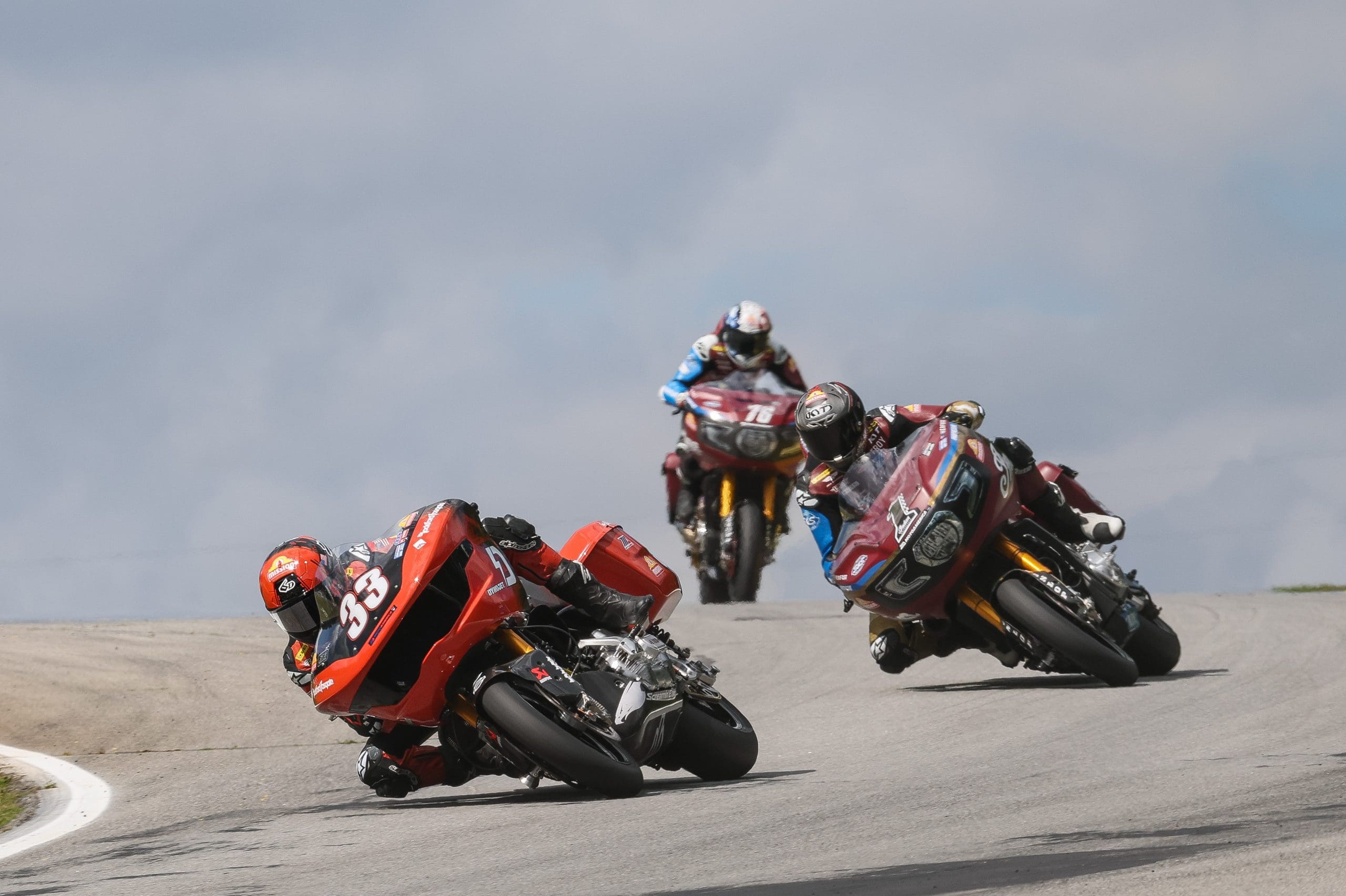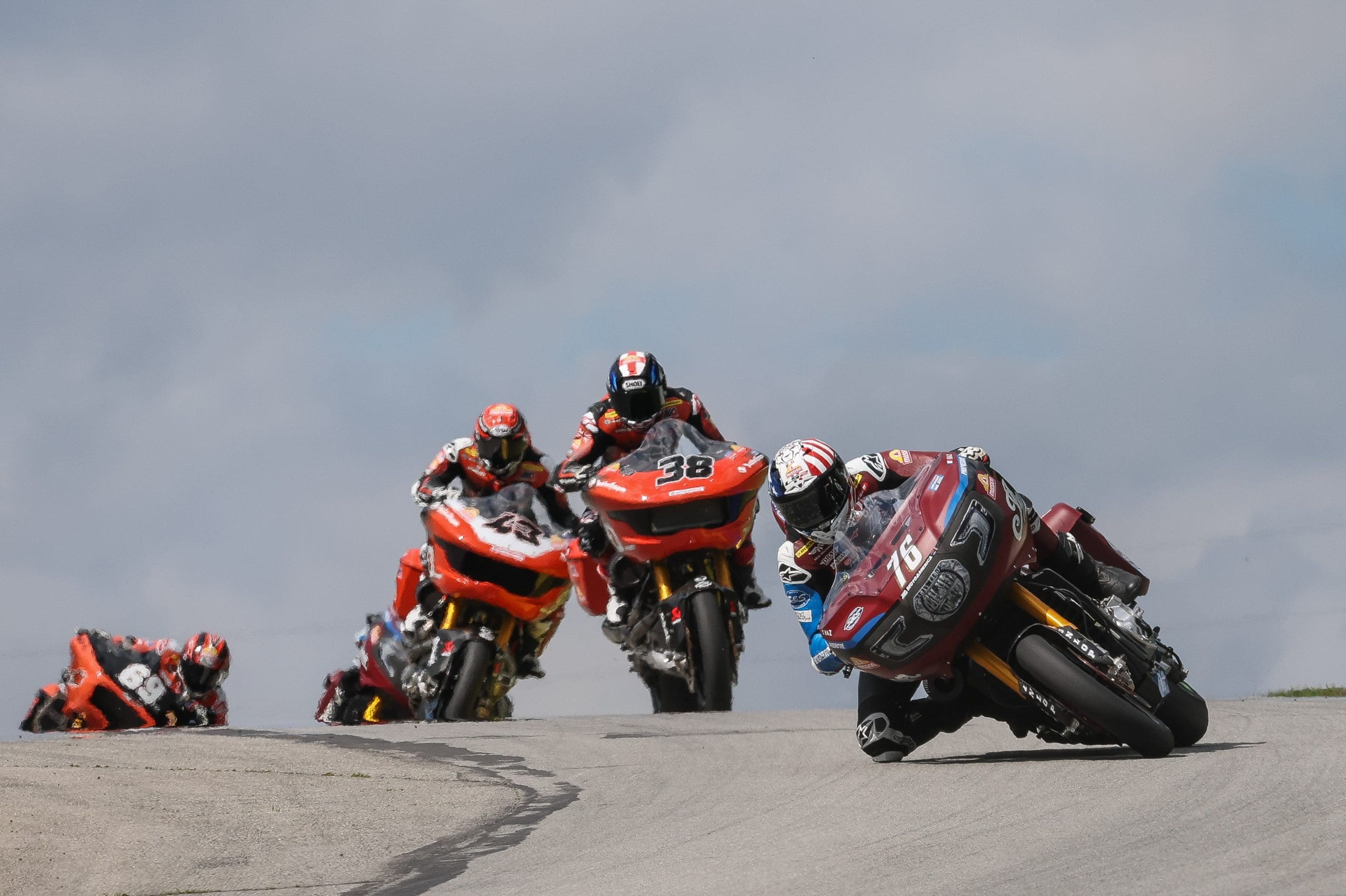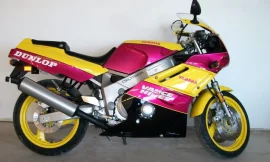
If you drew an arc of a rider’s ideal path through a corner, it looks like a smooth outside-inside-outside line. A lot of riders will even describe turns by how fast they go through them. For example, at some of our tracks, there are 80-mile-an-hour “sweepers” and 50-mile-an-hour “hairpins,” and the assumption is that the riders maintain those corresponding speeds constantly all the way through the turns.
But, if you were able to look at the GPS data through one of these corners, you’d see that the riders’ speeds through the turns is not constant at all.
From the start of the turn, a rider’s speed drops until it reaches a low point near the middle of the arc. So, for an 80-mile-an-hour sweeper, the bike might go as slow as 60 miles an hour, but it doesn’t stay at that speed for long. Instead, it quickly accelerates out of that slowest point in the turn. So, instead of the differential in speed looking like a “U,” it actually looks more like a “V” as the rider slows to a certain point, then accelerates quickly out of that point. An 80-mile-an-hour sweeper is really just a perception or an average speed and not a constant one.
What I’m describing is a concept called the “pivot point.” The bottom of that “V,” the slowest point in a corner, is the pivot point. Road racers use a reference point for that spot on a track. It is the exact place and the exact moment where and when they are able to change the direction of the bike most easily.
As they trail off the brakes while in a turn, their hands get lighter on the controls until they are putting almost no weight at all on the handlebars, and they essentially allow the front wheel to fall INTO the turn.

When And Where To Pivot
If you race or do track days, you may be thinking, “Oh, you’re talking about the apex.” Most road racers consider the apex of a turn to be the point where you are closest to the inside of the track. But, most times, the apex is not in the same place as the pivot point.
For example, the pivot point in double-apex corners and increasing-radius corners is in a different location than the apex. This concept applies to all bikes—big or small—and all racing lines—point & shoot, fast & flowing, or a combination thereof. Also, different bikes may require different pivot points in order to take full advantage of the strengths and weaknesses of each bike.
In a “fast-exit” corner, the pivot point is located earlier in the turn, and the rider gets on the gas sooner to take advantage of the fast exit. Conversely, in a “slow-exit” corner, the pivot point is located later in the turn in order to take advantage of all the available corner-entry speed.
In a “balanced corner” with an equally fast entry and exit, if the rider needs entry speed to pass another rider, they will pivot a little later. And, if the rider wants to out-accelerate another rider on the exit, they will pivot a little earlier.
For topnotch road racers, the slopes of the V are much steeper, usually on both sides. Faster riders are faster both into and out of the corner. And, understanding where the pivot point is allows them to plan the fastest way the get to it, and the fastest way to exit from it.
For the full 2025 MotoAmerica schedule and to purchase tickets for MotoAmerica events, click HERE
For information on how to watch the MotoAmerica series, click HERE








